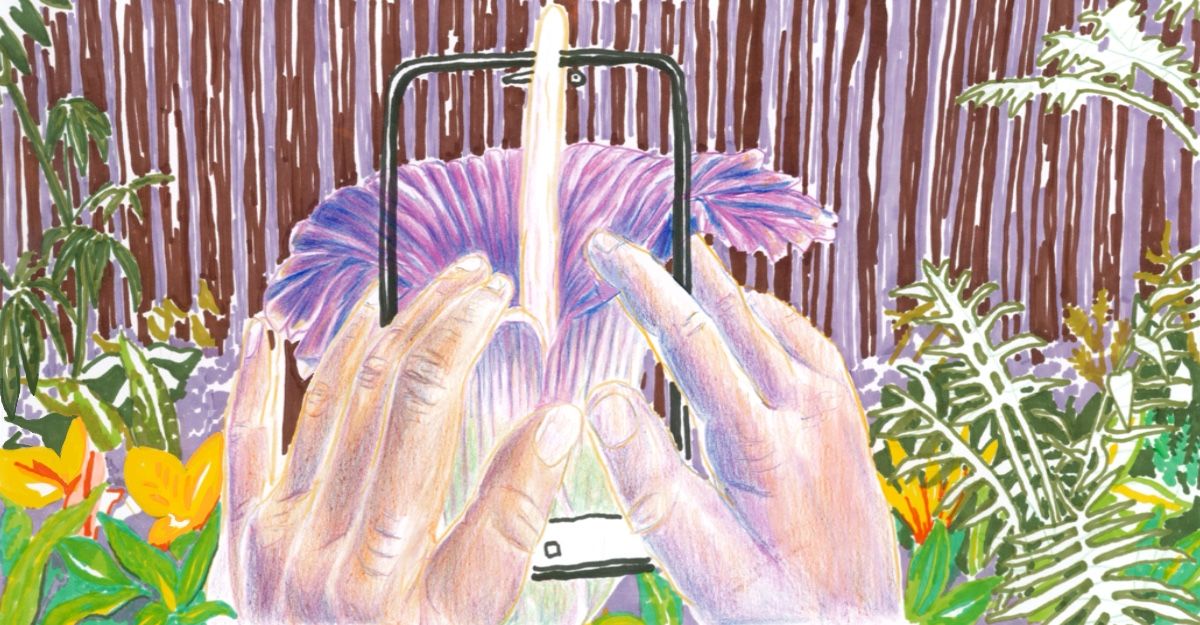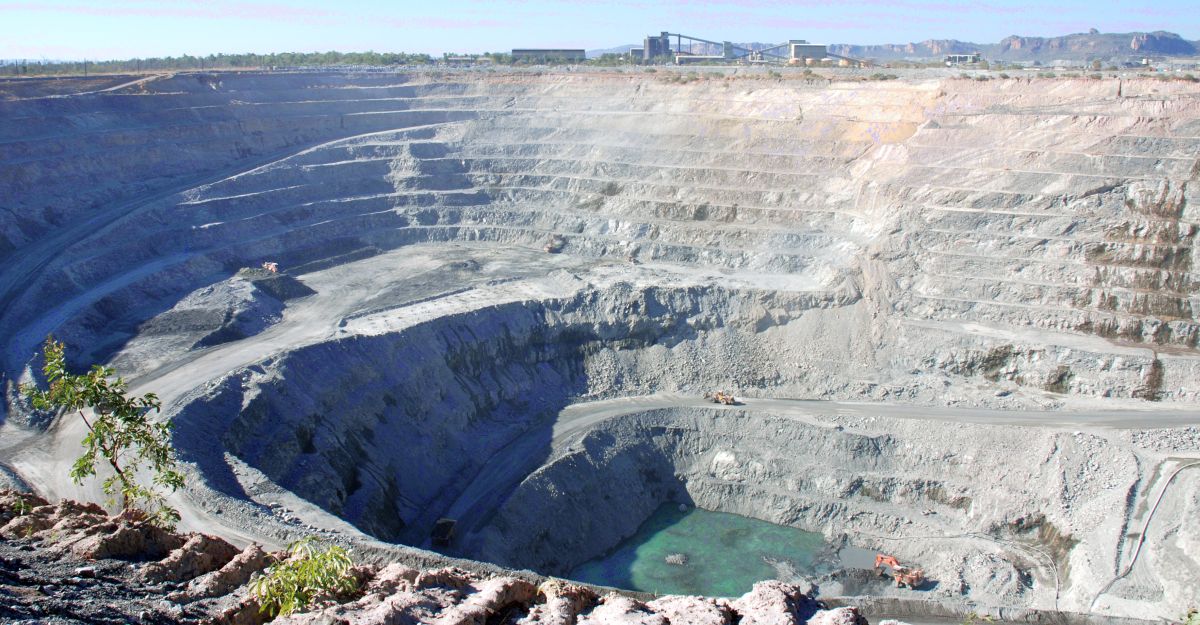‘Their bodies fatten on it and they hunger violently for it. They crave gold like hungry swine.’
— An Aztec chronicler describing the arrival of the Spaniards (Open Veins of America by Eduardo Galeano)
Mullock heaps pockmark the bush and my home rests uneasily on wounded land.
Land that holds memory, holds remnants: derivative of remains—all that is left, but also that which continues to exist. Djaara, the local Dja Dja Wurrung people, call it ‘Upside Down Country’, because what should have been left below, now sits on top. The Djaara had uses for quartz but not for the soft material of gold (kara) which beds in its veins.
Once sparsely treed grasslands are now replaced by stunted ironbark forests. Large trees cut down at their knees during the goldrush are shadows of their former selves. Deep shafts, altered drainage, abandoned mines and rock piles reshape the earth. Chinese bush, native to the area and used as thatch for the Chinese goldminers’ huts, has become a weed. I visualise the thousands of miners, including women and children, scribbling frantically upon the land, knee deep in mud, knee deep in dust, gripped by a kind of madness. Yearning. A chaotic scene, the land riddled with holes from three metres to twenty-four metres deep.
Dja Dja Wurrung artist and curator Natasha Carter put together an exhibition, Undercurrent: The History beneath the Image, at Bendigo Art Gallery in 2019. She chose a suite of nineteenth century paintings and drawings from the historical collection that depicted her ancestral land through a Eurocentric colonial lens. One of the paintings, The End of the Rainbow, 1857, by George Rowe, is of the goldfields at Golden Square (my children went to the high school in this now suburb). It is a watercolour in warm hues, a romanticised scene despite, or possibly because of, endless tree stumps and burning roots. It resembles a battlefield, shocking in its decimation. Natasha writes ‘you start thinking of what it looked like back then, and for me, I always think about what it looked like before the goldrushes … I am interested to try to get people into the mindset of looking at artworks from an Indigenous perspective.’ What is missing? Who is missing? The paintings were hung with a quartz and gold line running behind them like the seam that reveals gold. A seam that marks a join that was never meant to be ripped open. For local Aboriginal people, the ‘discovery’ of these seams of gold brought another wave of devastation following earlier waves of invasion, dispossession and massacres.
White bodies that didn’t/don’t belong, treading heavily on the land, staking our claims. Observers of the time write of the constant noise: the grate of the cradles, the frenzied felling of trees, the barking of the many dogs, the shouting and the gunfire. Almost everyone on the goldfields was armed. William Howitt, a British writer who lived for two years on the goldfields, thought them ‘just like children delighted by the noise of gunpowder’.
Stan Grant uses Jacques Derrida’s word ‘“hauntology”, to describe how the traces of our past—our ghosts—throw shadows on our world’. We have painted ourselves into the land and called it our own. My great-grandmother Maria came to the goldfields. She was most likely an early economic migrant fleeing a recession following the Napoleonic wars and degradation of the land.
Transplanted to an adopted land, ‘the act of taking something on as your own’ at the southern end of the world. Maria came from Kilkhampton, an ancient Cornish town mentioned in the Domesday Book. In a collection called The Wheal of Hope, a contemporary poet from the West country writes: ‘hard rock breeds hard men/who slip between earth’s cracks for a living’. Wheals are the engine houses of the tin and copper mines that dot the landscape, but ‘wheal’ is also ‘a red swollen mark left on flesh by a blow or pressure’. Scarred land. The reserves of tin were eventually exhausted, and the sea and rivers ran red from the copper mines. Miners emigrated to slip between the earth’s cracks on the other side of the globe. To unsettle.
Maria’s obituary published in The Ballarat Star in 1905 reads, ‘after a few years residence in Melbourne (they) removed to the Black Lead diggings near Buninyong, when were born to them the large family of 12 children, of whom 9 sons and one daughter are at present living’. The first baby born to her at 22 years of age, her last (my grandfather) at 39. Two daughters died in their first year. It is not so long ago, but all I know of her are the remnants in historical records. Staunch Wesleyans, their gravestone, in a cemetery at Linton, reads only: Mother and Father.
I have inherited from Maria a ceramic statue of Mary on a donkey, a china water pitcher painted with nasturtiums, and a recipe for Cornish pasties. She brought them with her in 1854 as passenger 104 on the Apolline. According to the passenger notes, she travelled alone, was 19 years old, ‘the daughter of laborers, a spinster and a needlewoman’ who could read and write. There is comfort in the last fact. Her body was not indigenous to this land, her genes belonged to cold damp places, but still she came, to experience a heat that she would only have known from a blacksmith’s forge, a hard soil that could break a pick, and animals straight from a child’s fantasy.
Despite women and children being on the goldfields, it was predominantly a masculine environment, often a brutalised one. The Bendigo Advertiser reported floridly upon the social upheaval, crime and political unrest. William Howitt wrote in 1853: ‘little more than a year ago, the whole of this valley was an unbroken wood’. He goes on to describe the destruction, ‘only rows of tents and confused heaps of gravel—gives you an almost awful idea of the velocity with which a whole country may be stripped of gold’. Elizabeth Ramsay on a visit to the same Victorian goldfields wrote, ‘money absorbs every thought, every heart, in this strange camp’. Within a year half a million people ‘rushed’ to the goldfields. It is difficult to place Maria in the landscape. It is difficult to hear her in all the cacophony.
My settler story began with colonisation and gold, and it continues. Near my home, wooden ‘poppet heads’, once used to haul gold and miners to the surface, dot the skyline of Bendigo (known as Dai Gum San, or ‘Big Gold Mountain’, by the Chinese). When the alluvial gold was gone, the lust for wealth drove mining underground, creating a concentration of deep shafts spanning eighteen kilometres to the depth of one kilometre. The Bendigo goldfield contains the largest concentration of gold shafts anywhere in the world. We don’t always notice what is beneath us, or what came before us, and what we leave behind. The groundwater is rising, finding its own level, laced with arsenic, salt and metal. The Bendigo Advertiser has the occasional headline: ‘Sinkhole opens up just metres from front door’. The earth moans. Land rush/minerals rush. The present Fosterville gold mine near Bendigo is Victoria’s richest, the equivalent of a trailer load of gold is worth $86 million. Surely part of the allure of gold as currency is the allure itself, it is ultimately a social construction, valuable because we perceive it to be and because it is scarce, is difficult to extract and has a bright lustre. Robert MacFarlane writes in Underland, ‘We have now drilled some 30 million miles of tunnel and boreholes in our hunt for resources, truly riddling our planet into a hollow earth.’
A recent headline in The Age shouts, ‘Eureka! Is There a New Gold Rush in These Long Tubes of Earth’. Driven by consistently high gold prices and known as the ‘noisy truth machine’, a new drill bores deep into the earth in the Wombat State Forest. Deeper than previously possible. ‘People love gold,’ states the Mineral Council of Victoria’s Executive Director. ‘It will always be in demand.’ Then and now. 45% of the world’s gold is held by governments or central banks—storing wealth. I may not own gold bullion or jewellery but I do have a smartphone, laptop and television. The largest industrial use of gold is in electronics. Their bodies fatten on it and they grow hungry for it.
During covid lockdowns, my walks in the state forest adjoining my home went deeper and deeper. The destruction from the original goldrush has drastically changed the contours of the land, yet now protected from mining, there is a stillness. I can hear the gentle sound of birds and animals that existed long before me. Existed long before Maria. Existed when the Dja Dja Wurrung moved through these wooded plains. Near an early miner’s constructed pond, blue dragonflies hover. I sight a rare owlet nightjar, its song ending in bubbling laughter as a chatter of white winged choughs lift from the ground. The kangaroos halt, motionless, resembling granite rock shapes and the leaves on the ironbark trees have rain tips like tiny mirrors. The abundance of the spring wildflowers seems to compensate for the bleakness of a global pandemic and suggest the survival of flora flourishing long before mining. Chocolate lilies, rabbit ears orchids, milkmaid lilies, nodding greenhood orchids, and black-antler flax lilies. English names supplanting Djaara words.
Nature writing cannot become a literature of consolation only, where a hovering dragonfly becomes more than a hovering dragonfly. It is not enough to just evoke nature; it has to navigate between joy and anxiety. It is only three generations since my ancestor stepped from the Apolline, a short space for all the damage done. Kate Marvel, climate scientist and writer, suggests we need courage not hope, ‘the resolve to do well without the assurance of a happy ending’. Maybe grief can be a weapon.
‘It is time to stop learning about Indigenous cultures and start learning from them,’ Margo Neale writes in Songlines, a book in the First Knowledges series. ‘The Elders are not talking about sharing their stories: they are talking about telling you your stories.’
The traditional owners of the land I live on entered into a Recognition and Settlement Agreement with the Victorian government in 2013, formally recognising the Dja Dja Wurrung people as the original owners of their country and acknowledging the history of disbursement and dispossession. Various parts of the region are recognised as belonging to the Dja Dja Wurrung and returned to them. Near where my ancestors settled/unsettled, there is a kangaroo-grass project, Djandak Dja Kunditja: Country healing its home. Kangaroo grass is rare, mainly confined to roadsides due to years of other crop cultivation and sheep grazing, but now native grasses are grown to eventually supply bush grasslands regeneration and grain for food markets. The Djandak project is also regenerating the Bendigo creek, previously an unloved drain with the stench of sulphur from years of mining. A series of billabongs are cleaning the water and giving shelter for frogs, birds and invertebrates to feed on. A traditional owner, Rodney Carter, quoted in the Bendigo Advertiser, talks of the need in a hilly landscape ‘to hug water features like creeks and rock wells’. On a site where the gold camps once sprawled among regenerating bush, The Dja Dja Wurrung Clans Aboriginal Corporation is planning a camping village, ‘the first to be built in nearly two hundred years’, to celebrate culture in a box-ironbark landscape. What was lost is, in part, returned. Remains.
James Baldwin once wrote: ‘History is not the past. It is the present. We carry our history with us.’ Maria’s nasturtium-painted water pitcher is on my dressing table. A reminder of the woman, but also a reminder of my settler inheritance and the damage done (and still being done).
There is a Russian proverb: ‘When gold speaks everything else is silent’. But maybe it doesn’t have to be.



